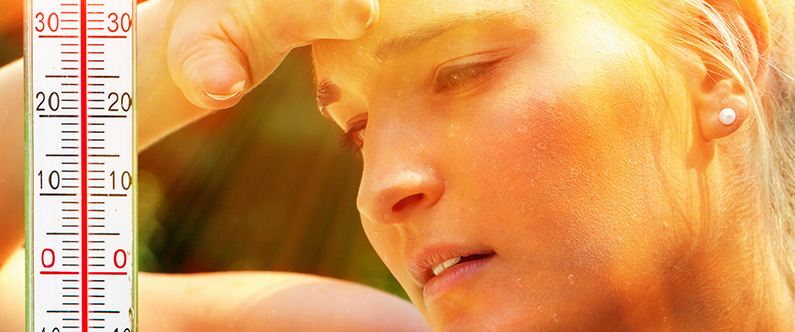Exercising Outdoors in the Summer
 Follow simple tips below to reduce the risk of heat illness
Follow simple tips below to reduce the risk of heat illness
The health benefits of regular exercise and physical activity are well established – these are important to not only maintain a normal body weight but can also prevent the development of chronic diseases like diabetes and cardiovascular disease. However, humidity and the scorching heat during summer in Qatar can make exercising outdoors a challenge. If you do exercise outdoors, adopt appropriate precautions. On hot and humid days, apparently easy exercises can become intense on the body. Exercise leads to an increase in body temperature and the body cools down naturally through sweating. But on a humid day, the body must work hard to cool down, as the humidity prevents sweat from evaporating.
Dehydration
Exposure to high temperatures with inadequate or insufficient fluid replacement can cause dehydration. Even slight dehydration increases the risk for heat-related illness like heat cramps, heat exhaustion, or heat stroke. Recognize the signs and symptoms of dehydration listed below to help prevent dehydration.
Signs and symptoms of mild to moderate dehydration include:
- Thirst
- Dry or sticky mouth
- Headache, muscle cramps
- Dark urine
Signs and symptoms of severe dehydration:
- Not urinating or very dark-coloured urine
- Irritability or confusion
- Dizziness, fatigue
- Rapid heartbeat
Heat cramps
Exercising in hot weather can sometimes lead to painful muscle contractions, known as heat cramps, often in the abdomen or legs.
Heat exhaustion
Another form of heat-related illness is called heat exhaustion, which results in heavy sweating, and rapid weak pulse. If left untreated, heat exhaustion might progress to a life-threatening condition called heat stroke, in which the body temperature rises to 39.4 °C (102.9 °F) or higher in 10-15 minutes. This requires immediate medical treatment. Some of the warning signs or signals for heat exhaustion and heat stroke are described in the figure below.
Therefore, it is important to pay attention to the body’s warning signs and signals before, during and after any outdoor activity, such as walking, running, playing sport or performing an exercise session.
Follow simple tips below to reduce the risk of heat illness:
- Timing: Exercise early in the day before or during sunrise when it is cooler or after sunset in the evenings. Avoid exercising between noon and 3 p.m. as it is the hottest time of the day. If possible, always choose shaded areas or shaded routes to keep out of the sun.
- Hydration: Drink fluids throughout the day even when not feeling thirsty to stay hydrated. During the summers it is easy to lose a few pounds through sweating. So, weigh yourself before and after the workout and replace each pound or 500 grams lost with 2 to 3 glasses of water. Water should be your choice of drink as it is easily absorbed by the body. Also, include nutrient-rich foods like cucumbers, lettuce, watermelons, grapefruit, and citrus fruits like oranges in the daily diet to replenish body electrolytes. However, if the activity is vigorous and/or if the duration is more than 60 mins, you may refuel the body with sports drinks.
- Clothing: Wear loose-fitting, light-coloured, and lightweight clothing while exercising outdoors. Sweat-absorbing clothing preferably with long sleeves is ideal for hot temperature and for protection from the sun. Always wear UV-blocking sunglasses and use water-resistant “broad spectrum” sunscreen with SPF 45 or higher to avoid sunburn.
- Know your body: It is important to plan your activity based on personal fitness levels. Try not to start anything new in the hot weather as your body might have a low tolerance. Start with low intensity exercise and short duration of activity and gradually build it up. If you are taking medication for any medical condition, consult a doctor for advice regarding a safe exercise routine for you.
- Choose the right place and team up! If heat and humidity are concerns, do not quit exercise altogether; instead, try to walk inside the shopping malls or in a gym. Try climbing stairs inside a mall or an air-conditioned building or inside your home and partner with a friend or family member to make it more fun.